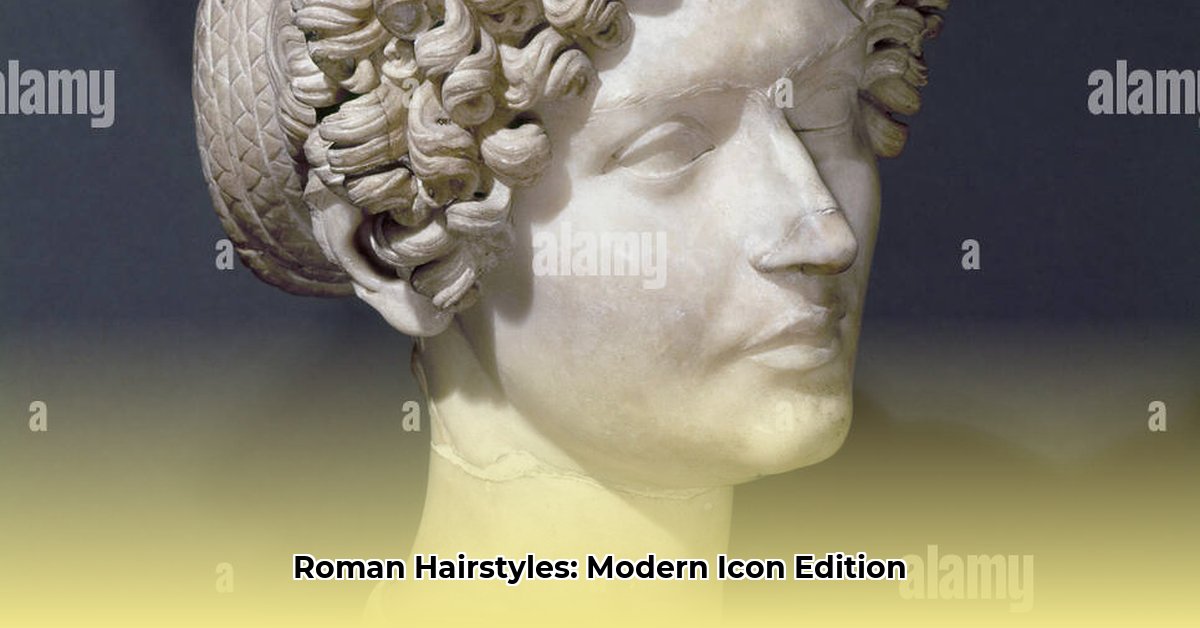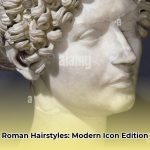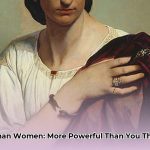Beyond mere aesthetics, ancient Roman hairstyles were profound declarations of social standing, gender roles, and individual identity. Explore Roman women’s attire to understand this further. Far from being fleeting trends, these elaborate coiffures meticulously crafted statements, unveiling a person’s precise position within Rome’s intricate social fabric. This visually-rich guide delves into the fascinating world of Roman hair, exploring its evolution, significance, and offering insights for modern adaptation.
Roman Coiffure: Status, Symbolism, and Style in a Stratified Society
Did ancient Roman hairstyles simply exist to enhance beauty, or did they subtly convey a person’s place and power within Rome’s complex social networks? Indeed, these styles were meticulously chosen declarations, intricately designed to reflect an individual’s status, wealth, and role in society.
The Crowning Glory of Roman Women
For women in ancient Rome, their hair was a potent form of non-verbal communication, with intricate styles conveying significant messages without a single spoken word. The ornatrix, a highly skilled enslaved woman, played a crucial role, meticulously crafting magnificent hairstyles that unequivocally showcased her mistress’s wealth and elevated social standing. These styles transcended simple beauty; they signified power and position in the bustling Roman Empire.
- The Tutulus: This distinct cone-shaped bun stood as the ultimate symbol of marriage and matronly authority, worn with unwavering pride by married women, particularly the materfamilias. It was a complex style achieved by piling hair high and tying it with purple woollen fillets, boldly proclaiming, “I am a woman of standing and responsibility.” This ancient Etruscan style remained a constant throughout changing fashions.
- The Nodus: In refined contrast, simpler yet undeniably elegant looks, such as the nodus, were favored by influential figures like Livia, wife of Emperor Augustus, and Octavia, his sister. This style involved parting the hair in three, looping the middle section back over itself to create a pompadour-like effect, while the side sections were tied into a bun at the back. It subtly suggested that, at times, less could indeed convey profound sophistication.
- Julio-Claudian Simplicity: During the early Julio-Claudian era, some styles were intentionally simple, featuring hair parted in two and tied in a bun at the back. This understated elegance may have intentionally juxtaposed Roman modesty against the perceived flamboyance of figures like Cleopatra.
- Flavian and Antonine Extravagance: During the reigns of the Flavian (69–96 AD) and Antonine (98–117 AD) emperors, Roman hairstyles reached astonishing, sometimes gravity-defying, heights. Noblewomen adopted flamboyant “Cypriote curls,” creating lofty masses of shaped curls and braids. Some constructions, like the famous Fonseca Bust, resembled multi-story buildings, as ancient writer Juvenal observed. These towering styles were often adorned with precious jewels and frequently augmented with toupees or woollen fillets for volume. The Flavian style loudly proclaimed that extravagance was the reigning aesthetic. Later Antonine styles brought the front curls lower, and the coiled braids at the back rested on top of the head.
- Severan Styles: Julia Domna, wife of Septimius Severus, famously wore a heavy, globular wig with simple finger-sized waves and a central parting. Despite her Syrian origins, she adopted this Roman style, perhaps to imitate her predecessor, Faustina the Younger. As the Severan period progressed, styles evolved to include more curls and ringlets, often accompanied by wigs.
The Roman Man’s Message: Simplicity with Significant Statements
While Roman men typically did not embrace the flamboyant styles seen among women, their haircuts conveyed equally important messages about Roman identity and societal norms. Short hair was generally the established norm, symbolizing a civilized demeanor in contrast to the perceived “barbarian” styles of peoples beyond the Roman Empire’s borders.
- Early Republic: In the Roman Kingdom and Early Republic (before 300 BCE), men likely wore long hair and beards, akin to the Greeks.
- Clean-Shaven Trend: With the introduction of barbers (tonsors) around 300 BCE by Publius Titinius Menas, short hair and a clean-shaven face became customary. General Scipio Africanus popularized daily shaving during the Second Punic War, emulating Alexander the Great and signaling new thinking to the conservative Roman senate. This practice became a “state duty” for leading men like Sulla, Julius Caesar, and Augustus, who meticulously ensured they appeared freshly shaved.
- The Depositio Barbae: A significant rite of passage for young Roman men was the depositio barbae, the ceremonial first shave, often performed around age 20 or when donning the toga virilis. The shaven beard was often consecrated to a deity, sometimes in a golden casket, highlighting its profound religious and social importance.
- Beards and Exceptions: Beards were usually permitted only in times of mourning or military defeat. However, some emperors defied the clean-shaven norm. Emperor Tiberius, for instance, wore his hair longer at the back, a tradition of the ancient Claudian family. Hadrian (117–138 AD) famously adopted a full beard, initiating a century-long trend among emperors, usually seen as a mark of his devotion to Greek culture, though some sources suggest it was to hide blemishes.
- Caesar’s Concern: It was highly desirable for Roman men to have a full head of hair. Julius Caesar, bothered by his baldness, painstakingly combed thin locks forward and was granted the right to wear a laurel crown by the Senate, which helped mask his receding hairline. Suetonius noted, “His baldness was something that greatly bothered him.”
- Imperial Trends: Emperors often set fashion trends. Nero (54–68 AD) adopted elaborate curls and was the first emperor to sport facial hair, specifically a neckbeard. In his wake, men began to curl their hair. Later, during the Flavian period, men typically had short, trimmed hair on the crown, while Trajanic men favored straight cuts with forehead bangs.
Tools of the Trade: Crafting Ancient Beauty with Innovation
The tools and techniques employed by the Romans for hairstyling were surprisingly sophisticated, highlighting their dedication to classical beauty standards. Romans utilized combs fashioned from durable materials like bone, ivory, or bronze. These implements reveal a deep understanding of Roman fashion trends.
- Barbers and Tonstrinae: Professional barbers, or tonsors, became instrumental in Roman society, especially during the Imperial period. They operated in bustling public barbershops called tonstrinae, which were not merely places for grooming but vital social hubs where citizens gathered to discuss gossip and exchange news. These shops were often crowded, leading emperors like Domitian to regulate them, prohibiting razors from being drawn in dense crowds due to the risk of accidental injury.
- Razors and Shears: Roman barbers used iron razors (novacula) and shears (forfex) to cut and shave hair. Despite being sharpened on whetstones, these tools were often inefficient and could cause “steps” in haircuts or accidental gashes, leading to the use of plasters made from spider webs soaked in oil and vinegar.
- Hairpins and Accessories: Crafted from a diverse array of materials—from humble wood for the poor to gold, ivory, crystal, silver, or painted bone for the aristocracy—hairpins served both functional and decorative purposes, securing elaborate updos and adding touches of adornment. They were often decorated with carvings of gods or with beads and pendants. Married women also wore woollen fillets called vittae to bind their hair, signifying modesty and purity.
- Calamistrum: This instrument was the Roman equivalent of a curling iron, consisting of a hollow metal outer cylinder and a smaller solid cylinder. Hair was wrapped around the solid piece, inserted into the heated outer cylinder, and then curled. The frequent and high-temperature use of the calamistrum often resulted in thinning and damaged hair for women, suggesting that, even in antiquity, beauty often came with a potential cost.
- Hair Care Products: Romans used natural ingredients like olive oil, often infused with rosemary and lavender, as moisturizers and scalp stimulants. Vinegar rinses (especially apple cider vinegar) were common for clarifying hair and adding shine. To prevent graying, pastes made from herbs and earthworms were worn overnight, and pigeon dung was even used to lighten hair. For balding, remedies included sow’s gall bladder mixed with bull’s urine, or the ashes of ass’s genitals. Goat’s milk or dung was believed to cure head lice.
- Dyes: Romans experimented with natural and artificial dyes to alter their hair color. Blonde hair from Germany and black from India were highly prized. Yellow hair, achieved with mixtures of burnt nuts or plants, was sometimes used by prostitutes to signify their profession. To dye hair black, Pliny the Elder suggested applying leeches rotted in red wine for 40 days. Red dyes used animal fat and beechwood ashes, while saffron created golden tones. Emperor Lucius Verus, naturally blond, was said to sprinkle gold dust on his head for extra luminosity.
- Depilation: The Romans were deeply preoccupied with smooth skin. Both men and women engaged in depilation using methods like plucking with tweezers (volsella), applying depilatory liniments such as dropax (resin and pitch), or rubbing with psilothrum (white vine extract). This painful process, often performed by enslaved people, was crucial for maintaining a clean, civilized appearance, contrasting with “barbarian” body hair.
The Enigma of Roman Wigs and Hairpieces
Wigs and hairpieces were a significant feature in the Roman quest for the perfect look, particularly for Roman women’s hair. Women could instantly adopt the latest styles, utilizing wigs often crafted from blonde hair imported from Germania (symbolizing spoils of war) or dark hair from India. The exact frequency of wig usage continues to be a subject of vigorous debate among classical scholars.
There were two main types of wigs: the full wig, known as the capillamentum, and the half wig, or galerus. The galerus could function as padding for elaborate styles or as a toupee, attached by pins, sewing onto leather, or even glued to the scalp. Wigs allowed for elaborate styles to be achieved much faster and without the need to grow one’s own hair to extreme lengths.
- The Ornatrices: These skilled enslaved women were the true architects behind the era’s most elaborate Roman coiffures. They possessed the advanced knowledge and dexterity to create stunning updos, employing tools like the calamistrum (curling iron), various pins, and complex concoctions to hold every strand perfectly in place. The ornatrix was indispensable, facing severe punishment if a mistress was displeased with her hair, as satirized by Juvenal and Martial. They truly understood the transformative power of hair.
| Feature | Advantage | Disadvantage |
|---|---|---|
| Instant Volume | Instantly added volume, length, and dramatic flair to hair. | Could be uncomfortable to wear, especially in Rome’s warm climate. |
| Style Versatility | Allowed for dramatic style changes without long-term commitment. | Required regular, meticulous maintenance and cleaning. |
| Concealment | Concealed thinning hair or baldness, a common concern for both sexes (e.g., Emperor Otho wore a wig). | The use of lesser-quality materials might result in an unnatural appearance. |
| Status Symbol | Signified wealth and status, broadcasting affluence and ability to afford valuable human hair. | Could be extremely expensive, especially for those made of real human hair from prized regions. |
| Timeliness | Enabled the rapid adoption of new, complex fashions. | Some busts with detachable wigs were challenging to change effectively. |
For further exploration, historical context on ancient Roman hairstyles can be found on Wikipedia.
Recreating History: A Guide for Today’s Style Enthusiasts
Ready to unleash your inner Roman god or goddess and embody historical fashion? Here’s how you can authentically recreate these timeless styles:
- Conduct Thorough Research: Begin by meticulously investigating the specific time frame and social class you wish to emulate. Details varied significantly across periods within the Roman Empire’s hairstyles.
- Gather Visual Inspiration: Diligently study extant Roman sculptures, busts, and frescoes to gain precise visual ideas and understand the nuances of ancient coiffures. Pay attention to part lines, hair texture, and the overall silhouette.
- Experiment with Core Techniques: Practice the fundamental shapes and foundational techniques. For intricate curls, use modern curling irons or hot rollers; for braids, master various plaits. A high success rate in capturing the basic form can be achieved with consistent practice.
- Accessorize Authentically: Enhance your recreated look by incorporating historically accurate hairpins (consider modern equivalents in bone, metal, or decorated with crystals), elegant combs, and rich ribbons to complete the stylistic presentation.
- Adapt for Modernity: Skillfully modify the ancient styles to seamlessly integrate with your contemporary hair type, length, and cutting-edge hair reconstruction techniques. For instance, a “Melon Style” can be reinterpreted using modern elastic bands and decorative ribbons.
| Hairstyle | Primary Wearer | Time Period | Key Features |
|---|---|---|---|
| Tutulus | Married Women | Republican | Cone-shaped bun, tied with purple fillets, powerful symbol of matronly authority |
| Nodus | Elite Women | Early Imperial | Hair parted in three, middle section looped over forehead, sides in a bun at back |
| Flavian Elaborate | Wealthy Women | Flavian/Antonine | Towering masses of curls and braids, often augmented with toupees, adorned with jewels |
| Short Trim | Roman Men | All Periods | Short, neat, symbolizing civilization and practicality; common for soldiers |
| Hadrianic Beard | Emperor Hadrian | Imperial (Antonine) | Full beard on emperor, sparking a century-long trend among elite men, signifying Greek cultural appreciation |
| Braided Crown | Women | Various | Circular arrangement of braids, often adorned with flowers or gold accents, for festivals |
| Helmet Bun | Active Women | Imperial | Tightly coiled low bun, practical yet elegant, often at the back of the head |
| Twisted Rope Braid | Young Women | Various | Two hair sections twisted together, simple updo, symbolizing unity and grace |
Comparative Styles: Roman Women vs. Men
How did Roman women’s hairstyles vs. men’s hair practices truly differ centuries ago? Hairstyles were more than mere looks; they were profound statements. Indeed, coiffures mirrored status, wealth, and even political leanings. How did men and women differ in their intricate approaches to Roman beauty standards?
The world of Roman women’s hairstyles was a testament to both artistry and affluence. The higher the social status, the more intricate the elaborate style. Wealthier women consistently employed ornatrices (skilled enslaved hairdressers) to craft these highly complex styles, which often involved intricate curls created with the calamistrum, elaborate braids, and towering arrangements. Women’s hair was seen as an erotic area, and lengthy grooming sessions were tolerated despite some societal criticisms, testament to its importance in attractiveness and social signaling. Imagine the sheer dedication and skill required for such hair history!
Men, in contrast, generally kept their hair much simpler. Short hair remained the prevailing norm, signifying practicality and understated elegance, often associated with an “active role in society.” Lengthy grooming sessions for men were considered taboo, and emperors like Augustus employed multiple barbers to speed up the process. Beards fluctuated in and out of fashion, reflecting changing tastes and the influence of powerful emperors. While not as excessively elaborate as women’s styles, a man’s hair still conveyed subtle messages about his status, profession, and sophistication, an important aspect of Roman hair grooming.
| Feature | Roman Women | Roman Men |
|---|---|---|
| Complexity | Highly elaborate, intricate designs (e.g., Flavian) | Generally simple, short cuts, evolving beard styles |
| Social Link | Directly linked to status, wealth, and attractiveness | Subtle indicators of status, profession, and cultural alignment |
| Key Styles | Tutulus, Nodus, Flavian-era towering structures, various braids and buns | Short cuts, clean-shaven, varied beard lengths (e.g., Hadrianic) |
| Accessories | Extensive use of pins, combs, dyes, wigs, ribbons, jewels | Minimal accessories; focus on natural appearance, though dyes and some curling were present |
| Influences | Greek styles, diverse foreign cultures (e.g., Syrian influence on Julia Domna) | Military precision, imperial trends, Greek philosophy (for beards) |
| Grooming | Lengthy sessions, often involving ornatrices and complex tools | Quick, functional grooming; barbershops as social hubs, first shave as rite of passage |
To discover how these ancient Roman hair care secrets can be adapted today, refer to insights from Viori. Delve deeper into Roman grooming practices by exploring UNRV History’s comprehensive article. Additional details on specific women’s styles can be found at Fimaan.com.
The Enduring Legacy of Roman Hair and Grooming
In conclusion, the enduring allure of ancient Roman hairstyles is not solely attributed to their visual splendor; it’s about how they transport us back in time. They offer an invaluable glimpse into a society where hair served as a powerful medium for self-expression and for communicating one’s definitive place in the world. From the disciplined short cuts of Roman men symbolizing civilization to the towering, jeweled constructions of aristocratic women proclaiming immense wealth, every style was a meticulously crafted statement. By understanding these diverse styles, we gain a deeper appreciation for the fascinating complexities of Roman culture and their distinct approach to antique beauty techniques. What better way to connect with the illustrious past than through a hairstyle that has remarkably transcended millennia?
- Secrets of Ancient Rome agriculture: Feeding an Empire, Lessons for Our Future - August 18, 2025
- Unveiling ancient roman busts: Values, history, & decor tips. - August 18, 2025
- Unlock Ancient Glamour: Roman Hairstyles, a Recreation Guide for Today’s Style Icons - August 18, 2025
















